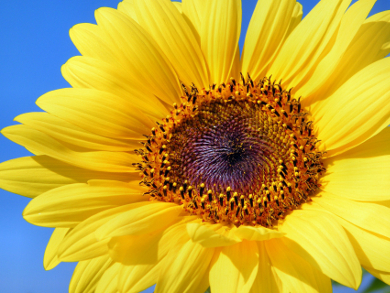Detailed Spectroscopic Investigation of Color Pigments
Have the colors in Van Gogh’s paintings remained the same over time? An international team of scientists based in Perugia (Italy) and Antwerp (Belgium) carefully examined Van Gogh’s famous Sunflowers painting exhibited in the Van Gogh Museum, Amsterdam, by using mobile spectroscopic techniques and synchrotron radiation. The study, which is published in the journal Angewandte Chemie, reveals definite changes in the least lightfast variety of the yellow pigments and thus opens questions about possible color alterations in this and other paintings.
For the Sunflowers analysis, the scientists combined several noninvasive spectroscopic techniques such as X-ray fluorescence and vibrational spectroscopies, which they applied point by point over the whole painting to obtain information on the element distribution and the molecular structure of the pigments used.
However, as the yellow colors, which appear in so many brilliant hues in Van Gogh’s paintings, are known to be composed of lead chromates containing chromium in its highest oxidation state, they took two additional microsamples from different areas of the picture and analyzed by synchrotron-radiation-based X-ray absorption techniques in order to investigate if possible changes in the chromium oxidation state have occurred.
Some, but not all, Chrome Yellow Colors Degrade over Time
Using these techniques, Letizia Monico, who is the corresponding author of the study, and her colleagues could clearly identify the different color pigments used in the Sunflowers. One of them was light-sensitive chrome yellow (LS-CY), a compound that gives a lemon-yellow tone and consists of a sulfate-rich lead chromate that is known to be prone to aging upon reduction to the lower chromium oxidation state III.
The scientists write: “The chemical state maps clearly show that chromium(III) species are present as a two-to-three micrometers thick layer right at the varnish/paint interface” resembling to the species they had observed earlier on artificially aged paint models made up of a similar LS-CY type. The regions identified were the table area beneath the vase with the sunflowers and also the sunflower petals. “At least at the two sampled spots, a color change arising from chrome yellow reduction has occurred” the scientists write.
Is this degradation visible as, for instance, darkening or color alteration? Monico stresses the need for careful monitoring of paintings containing this pigment over time. “Since chrome yellow pigments were widely used by the late 19th-century painters, this study also has broader implications for assessing the color appearances of other art works” she says.
- Evidence for Degradation of the Chrome Yellows in Van Gogh’s Sunflowers: A Study Using Noninvasive In Situ Methods and Synchrotron-Radiation-Based X-ray Techniques,
Letizia Monico, Koen Janssens, Ella Hendriks, Frederik Vanmeert, Geert Van der Snickt, Marine Cotte, Gerald Falkenberg, Brunetto Giovanni Brunetti, Costanza Miliani,
Angew. Chem. Int. Ed. 2015.
DOI: 10.1002/anie.201505840


